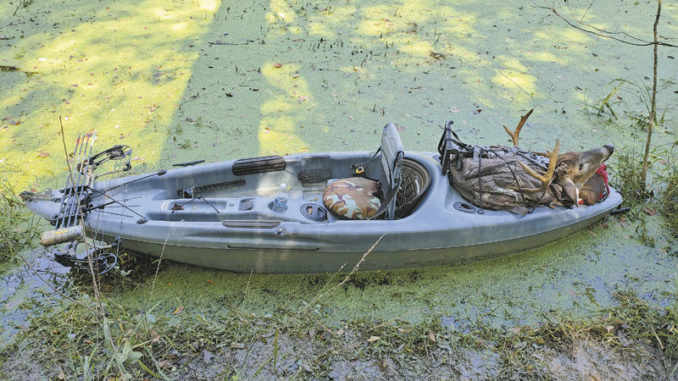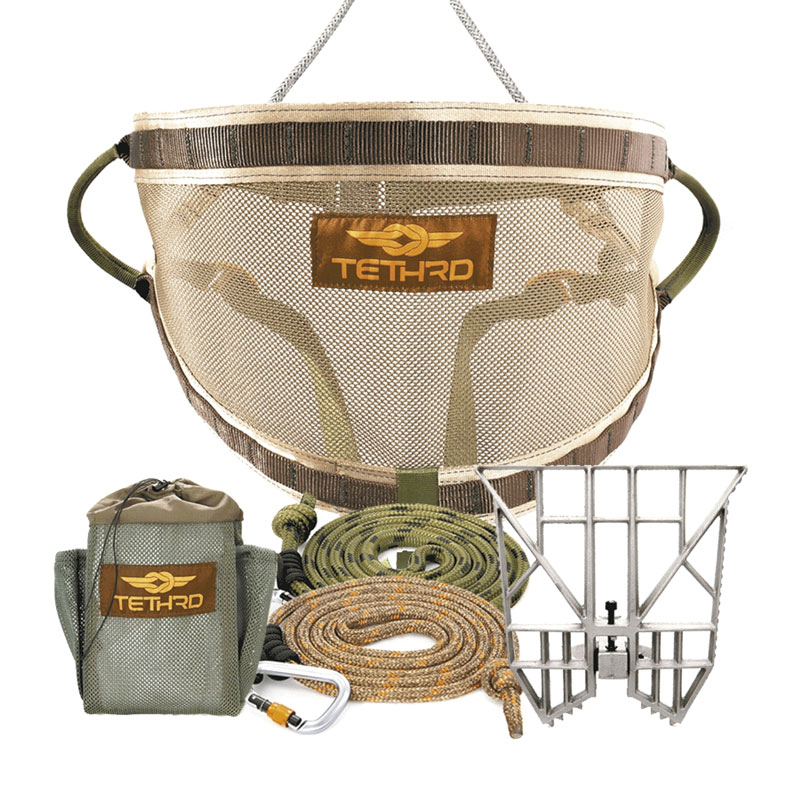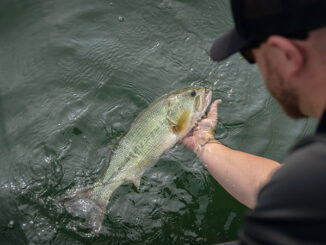

Kayaks aren’t for just fishing or waterfowling
Kayaks were used for hunting by native Americans for centuries before Europeans landed in North America. Although hunting tactics have evolved, the old ways never completely go out of style and certainly still work.
That’s where Jedediah Stern of Lexington, S.C., fits in. Stern is a dedicated bowhunter and videographer. He had the idea of using a kayak to get him deeper into public land than he could get without stomping through the hunting grounds from some distant road.
While doing some virtual scouting, Stern noticed a small piece of public land situated in South Carolina’s Midlands. It was surrounded by private land but accessible by water via a small but navigable creek. Perfect for kayaks.
“I found this tract of public land a couple of years ago and put a camera in a likely looking spot,” he said. “When I checked the camera, there were a couple of really nice bucks on it. So I started planning.”
Stern hunted the spot, which he described as “back of a cove,” twice last season and harvested one doe. Then, on Oct. 16, he launched his Sun Dolphin sit-on-top kayak at 4 a.m., complete with camera gear and his lightweight saddle stand gear, prepared to make a go of it.
Paddling in offers access to untouched areas
“Around 9 a.m., I hadn’t seen anything worthwhile and was starting to wonder if I’d picked the wrong spot,” Stern said. “I saw a doe working her way toward me and decided I’d just take her and move on. I was at full draw when I caught movement out of the corner of my eye.”
A massive, 12-point buck was making its move on the doe, quartering in hard from Stern’s left. Stern stepped around his stand for a better shot, but the buck only offered a front-end shot. He placed his pin on the animal’s chest and released the arrow.
“It happened so fast,” he said. “I gave him 45 minutes, then got down and immediately found a good blood trail, but no arrow.”
After tracking the deer for 20 yards, he found his arrow in a pool of blood. And in another 50 yards, he couldn’t believe his eyes. There lay a mature, 190-pound buck with a large, main-frame 10-point rack and two stickers. He’s confident the deer will make the South Carolina record book minimum of 125 inches.
Stern retrieved his camera setup and was reliving the hunt on film when he heard a noise behind him.
“It was the No. 2 buck I had on camera,” he said. “It came in behind me while I was filming and blew at me and stomped off.”
Completing his hunt documentary, Stern then set about field-dressing, skinning and caping the deer. He carefully bagged and packed the meat and loaded his kayak for the 2-mile paddle out.
“I do all my own processing and am considering doing my own taxidermy mount of the deer,” he said. “For it all to go down like this and get it on camera in such a remote area, it was the best South Carolina hunt I’ve had since moving here from Oklahoma 6 years ago.”

Hunt a saddle stand
Bowhunter Jedediah Stern credits much of his hunting and paddling success on being able to gain access to areas quietly, without disturbing deer. He also touts hunting from a saddle stand with allowing him to minimize how much weight he brings in with him, in case he has to add another 100 pounds of deer to his trip out.
Saddle-stand hunting has been popular in many areas around the country for years. But it is seeing a resurgence in popularity, particularly with public-land hunters who have to bring their stands to the woods with them and may have long journeys to get to their desired hunting location.
“I put the harness on before I leave the drop in area,” Stern said, “so I’m wearing it while I paddle in. And then it’s just a matter of carrying one climbing stick and the small platform. So I can be in the tree and set up, ready to hunt in less than 5 minutes.”
Stern constructed his own saddle-hunting system by using a climbing harness he owned and adding a lineman’s rope and 30-foot length of rope to a commercially made climbing stick and foot platform that he can attach to the tree and reset to work his way up.
Kayaks and saddles combine for lightweight hunting solution
Several manufacturers have capitalized on the recent surge in popularity of saddle-stand hunting. Some even offer complete kits that include the harness that supports the hunter while in the tree, all of the ropes used for safety, ascension and descending, as well as the climbing sticks and stand platform.
The surge in popularity with saddle hunting is especially appealing to bowhunters, due to the ability to hunt on the backside of a tree that may not be completely straight and without cutting down branches that help hide the hunter.
Saddle hunters generally set up facing the direction in which the deer are expected to travel. This allows the hunter to keep the tree trunk between him and the deer’s line of sight, hiding the hunter from the deer’s view and eliminating his outline completely.
If a deer approaches from the hunter’s offside, the saddle stand makes it easy enough to shuffle around the tree or turn around and draw on the deer without a lot of movement and noise.
For hunters using kayaks, saddle stand weights are measured in ounces rather than pounds, as is the case with traditional climbing stands. And they store in a small bag versus rigid aluminum framing that must be strapped down to the boat.





Be the first to comment